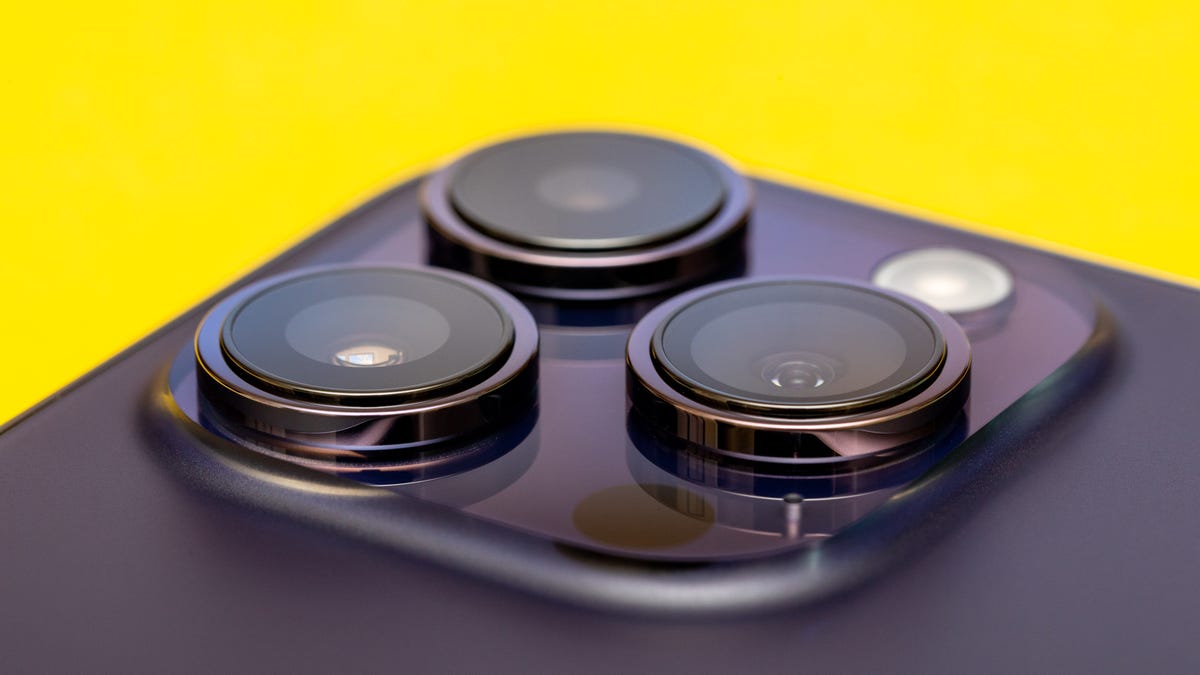
If the rumors are right, the iPhone 15 Pro or 15 Pro Max will get a periscope camera. That’s probably more exciting if you know what one is. If you don’t, we’re here to explain it for you.
In short, a periscope camera uses clever engineering to pack a bulky telephoto lens into a compact smartphone body so you can take photos of distant subjects like mountains or musicians.
Apple didn’t comment for this story, but a periscope camera is a no-brainer if Apple can find room for its components. Cameras are the most important feature in most phones, as evidenced by the amount of time manufacturers devote to detailing the new abilities during each launch event and the profusion of lenses sprouting from the backs of new models. Taking photos and videos is one of the most personally important uses of our phones.
We’ll find out Sept. 12 at Apple’s “Wonderlust” event what the company has built into the new iPhone 15 line.
Here’s a look at periscope cameras and why they’re a good fit for flagship phones like the iPhone 15 Pro.
Why would Apple add a periscope camera to iPhones?
The main reason is to provide iPhone customers with better photography options. The secondary reason is to catch up to the competition.
For iPhone photography, a 5x or 6x optical zoom would be good for lots of situations. Telephoto cameras are useful for photographing people who are a bit farther away, like kids at a playground or Taylor Swift away on a stage. Nature and landscape photography also benefits from better telephoto reach.
Google’s higher-end Pixel phones have had periscope telephoto cameras since 2022. A prism redirects light inside the camera body to accommodate longer zoom lenses that would otherwise be too thick for a smartphone.
The iPhone 14 Pro camera suite comes with a 3x zoom telephoto, the equivalent of a 72mm lens on a DSLR camera. That’s useful, but it falls well short of the 5x camera on Google’s Pixel 7 Pro or the 3x and 10x cameras on the Samsung Galaxy S23 Ultra. The iPhone is competitive (and taking market share away from Android rivals), but its telephoto photography is a competitive weak point.
How do periscope cameras work?
The basic problem with telephoto cameras is that they require physically longer lens assemblies. There’s no easy way around these limits of optics, physics and engineering.
Periscope cameras, also called folded cameras, work by building much of this length sideways inside the phone body. The outside lens looks like that of a regular phone camera, but behind it is a prism or mirror that bounces light 90 degrees. A 2016 Apple patent for a “folded telephoto camera lens system” shows both options.
Prisms are angled transparent blocks of glass or plastic that’ve been used for decades in optical equipment, for example binoculars or the viewfinders of SLR cameras. High-quality prisms don’t degrade image quality much.
Today’s periscope cameras offer 5x zoom, the equivalent of about a 120mm focal length on a traditional camera. But by using just the central pixels on a high-resolution image sensor, Google’s Pixel 7 Pro also can shoot at 10x zoom, about 240mm, without any digital magnification trickery.
Apple patented some periscope camera technology in 2016, showing designs with either a prism or a mirror to bounce light into the longer optics that telephoto camera lenses require.
How do periscope cameras compare to traditional cameras?
A periscope camera gives you better zoom, but don’t expect to match what serious photographers can do with a traditional camera and modest telephoto lens, much less a $13,000, 7-pound supertelephoto lens that’s hard to fit in your backpack. In my use, I’ve found the Pixel 7 Pro’s 5x and 10x modes useful for identifying birds, for example, but not for producing particularly good photos of them.
The reason for the limit: Periscope cameras still have relatively small image sensors that struggle with lower light. Bigger sensors offer higher image quality, but they cost more, and the bigger the sensor, the bigger and more expensive the accompanying lens assembly.
One problem with periscope cameras is that they can displace useful medium-telephoto cameras. Samsung’s Galaxy S23 Ultra solves this problem by including an entire 3x conventional camera along with the 10x periscope. Higher-resolution image sensors like those in the Pixel 7 and iPhone 14 Pro offer 2x modes that compensate. More unusually, Sony’s Xperia 1 V phone has a true zoom reaching continuously from 3.5x to 5.2x zoom.
If the rumor of a larger main camera sensor in the iPhone 15 Pro is true, that could help facilitate other zoom options for Apple, too. Year by year, flagship smartphones come closer to the traditional cameras’ zoom flexibility.
